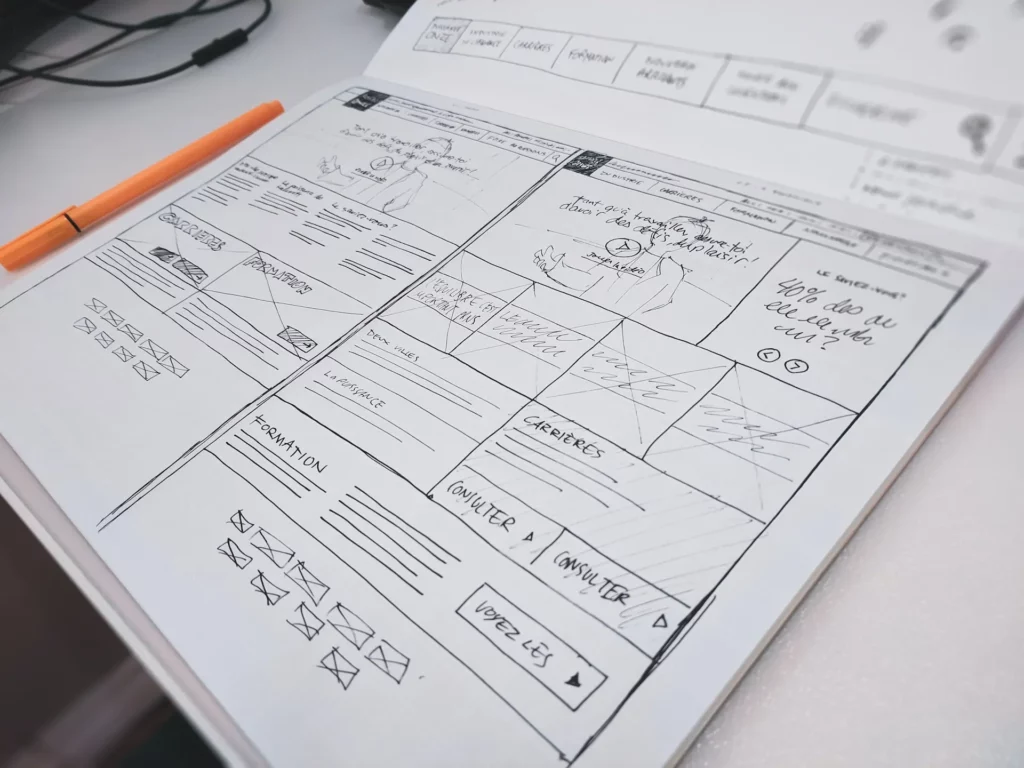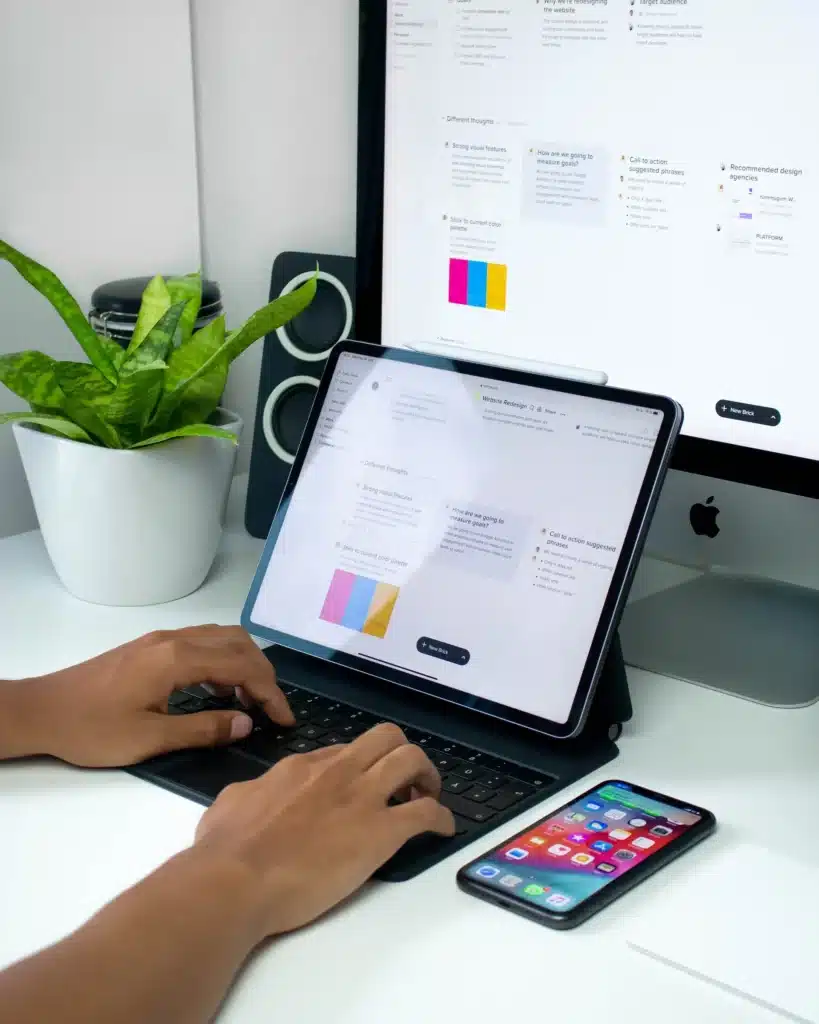In the ever-evolving landscape of web design, the concept of personalization has emerged as a crucial factor in shaping user experiences and driving digital success.
Table of Contents
What is Personalization in Web Design?
Personalization in web design refers to the practice of tailoring the content, layout, and functionality of a website to meet the unique preferences, needs, and behaviors of individual users. It involves creating a highly customized online experience that resonates with each visitor, making them feel as though the website has been crafted specifically for them.
This tailoring can encompass various elements, including content recommendations, user interfaces, product suggestions, and even the overall design aesthetics. Personalization aims to make online interactions more relevant, engaging, and meaningful by leveraging data and technology to understand and anticipate user preferences.
Importance of Personalization in the Digital Age
In the digital age, where information is abundant, and user expectations are continually evolving, personalization has risen to prominence as a strategic imperative for web designers and businesses alike. Several factors underscore the paramount importance of personalization:
- Enhanced User Engagement: Personalized experiences captivate users, increasing their engagement with a website. When content and features align with individual interests, users are more likely to stay longer, explore deeper, and return frequently.
- Improved Conversion Rates: Personalization has a direct impact on conversion rates. By tailoring product recommendations, offers, and calls to action based on user behavior and preferences, web designers can significantly boost conversion rates, leading to increased sales and revenue.
- Enhanced User Satisfaction: Websites that understand and cater to user preferences create a sense of value and satisfaction. Users feel understood and appreciated, which fosters a positive brand perception and loyalty.
- Competitive Advantage: In a crowded digital marketplace, businesses that invest in effective personalization gain a competitive edge. They can differentiate themselves by providing unique and relevant experiences that stand out from the competition.
- Data-Driven Decision-Making: Personalization relies heavily on data collection and analysis. Web designers and marketers can gain valuable insights into user behavior, preferences, and trends, enabling them to make data-driven decisions that continually improve the user experience.
Personalization in web design represents a dynamic shift from one-size-fits-all approaches to a more user-centric and data-driven paradigm. Understanding its definition and recognizing its significance is the foundation upon which web designers and businesses can harness its power to create compelling online experiences and achieve digital success.

Benefits of Personalization in Web Design
Personalization in web design offers a multitude of advantages, revolutionizing how users interact with websites and how businesses engage with their audience.
Enhanced User Experience
Personalization plays a pivotal role in elevating the overall user experience on a website. Here’s how:
- Relevance: By tailoring content and recommendations to individual user preferences and interests, websites become more relevant. Users find what they’re looking for faster, reducing the time and effort required to navigate the site.
- Simplified Decision-Making: Personalized interfaces help users make decisions by presenting them with options that align with their needs. This simplifies complex choices and increases user satisfaction.
- Consistency: Websites that remember user preferences, such as language, layout, and even preferred products or services, provide a consistent and familiar experience with each visit.
- Reduced Friction: Personalization can streamline the user journey by eliminating unnecessary steps or content that doesn’t align with a user’s goals, reducing frustration and friction in the process.
Improved Engagement and Conversion Rates
Personalization directly impacts user engagement and conversion rates, making it a powerful tool for businesses:
- Higher Click-Through Rates: Personalized content and recommendations generate higher click-through rates. When users see products, articles, or offers that resonate with their interests, they are more likely to click and explore further.
- Increased Time on Site: Personalized experiences can extend the time users spend on a website. Engaging content and tailored features capture their attention, encouraging them to explore deeper into the site.
- Boosted Conversion Rates: Personalized product recommendations, targeted promotions, and customized calls-to-action lead to higher conversion rates. Users are more inclined to make a purchase or take a desired action when they feel a connection to the content.
- Reduced Cart Abandonment: In e-commerce, personalization can help reduce cart abandonment rates by presenting relevant product suggestions and addressing potential objections or hesitations.
Increased Customer Loyalty
One of the most substantial benefits of personalization is its impact on customer loyalty:
- Personal Bonds: Personalized experiences make users feel valued and understood, fostering a sense of connection and loyalty to the brand or website.
- Repeat Business: Satisfied customers are more likely to return. Personalization ensures that each visit is a positive and rewarding experience, encouraging users to come back for more.
- Word-of-Mouth Marketing: Happy and loyal customers are more likely to share their positive experiences with friends and family, leading to organic word-of-mouth marketing and brand advocacy.
- Reduced Churn: In subscription-based services, personalization can reduce churn rates by continuously tailoring content and recommendations to align with the evolving interests of subscribers.
Personalization in web design brings about a host of benefits, ranging from a superior user experience to improved engagement, conversion rates, and customer loyalty.
Embracing personalization is not only a means to enhance the digital journey but also a strategic advantage for businesses seeking to thrive in the competitive online landscape.
Types of Personalization in Web Design
Personalization in web design encompasses a diverse range of strategies and techniques aimed at tailoring the online experience to individual users.
Content Personalization
Content personalization focuses on delivering relevant and engaging content to users based on their preferences, behavior, and demographics. Key aspects of content personalization include:
- Recommendation Engines: These algorithms analyze user data, such as browsing history, search queries, and past interactions, to suggest articles, videos, products, or services that align with a user’s interests.
- Dynamic Content: Websites can dynamically adjust content blocks, headlines, images, and calls to action based on the user’s profile, location, or previous interactions.
- Personalized News Feeds: Social media platforms and news websites personalize users’ news feeds by showing content from friends or sources they follow, prioritizing posts that are likely to be of interest.
- Email Personalization: Tailoring email content, subject lines, and timing based on a user’s preferences and behavior can significantly increase email engagement and click-through rates.
User Interface Personalization
User interface personalization focuses on customizing the design and layout of a website to enhance the user experience. Key elements of UI personalization include:
- Layout and Design: Websites can adapt their layout, color schemes, and typography to match a user’s preferences or accessibility needs, providing a more visually pleasing and user-friendly experience.
- Language and Localization: Personalizing the language and content based on a user’s location or language preference ensures that users can access information in a way that feels natural to them.
- Customizable Dashboards: Some web applications allow users to customize their dashboards or profiles, rearranging widgets or modules to suit their workflow and priorities.
- Adaptive Navigation: Adaptive navigation menus can prioritize sections or features of a website that a user frequents, making it easier for them to find relevant information quickly.

Product Recommendations
Product recommendations are a specialized form of personalization commonly used in e-commerce and content-driven websites. Key features of product recommendations include:
- Collaborative Filtering: Recommending products or content based on the behavior and preferences of similar users, helping users discover items they might not have found otherwise.
- Content-Based Filtering: Analyzing the attributes and characteristics of products or content a user has interacted with to suggest similar items.
- Cart Recommendations: Suggesting complementary or related products when a user adds an item to their shopping cart, increasing the likelihood of upsells.
- Personalized Email Offers: Sending personalized email recommendations and promotions based on a user’s browsing and purchase history.
Behavioral Personalization
Behavioral personalization involves adjusting the website experience in real time based on a user’s actions and interactions. Key elements of behavioral personalization include:
- Exit-Intent Pop-ups: Displaying targeted messages or offers when a user is about to leave the website, encouraging them to stay or complete a desired action.
- Progress Tracking: Showing users their progress through a multi-step process, such as a sign-up form or checkout process, can reduce abandonment rates.
- Personalized Notifications: Sending push notifications or alerts that are relevant to a user’s behavior or location, such as notifying them of nearby events or promotions.
- Adaptive Learning: Continuously adjusting personalization algorithms based on user behavior and feedback, fine-tuning the user experience over time.
Personalization in web design encompasses a wide array of techniques and strategies, from tailoring content and user interfaces to providing product recommendations and behavior-based adjustments.
Each type of personalization aims to create a more engaging, relevant, and user-centric online experience.
Implementing Personalization in Web Design
To effectively implement personalization in web design, a strategic approach is essential. This section outlines the key steps and components involved in the implementation process:
Data Collection and Analysis
Data Gathering
The foundation of personalization is data. Websites must collect various types of data, including user behavior, preferences, demographics, and contextual information. This data can be gathered through tracking tools, registration forms, surveys, and interactions with the website.
Data Storage and Management
A robust data infrastructure is necessary to securely store and manage user data. This may involve databases, data warehouses, or cloud-based solutions. Ensuring compliance with data privacy regulations, such as GDPR or CCPA, is critical at this stage.
Data Analysis
Data collected must be analyzed to extract meaningful insights. Web designers and marketers can use analytics tools, machine learning algorithms, and data visualization techniques to understand user behavior, identify patterns, and determine personalized content or recommendations.
User Profiling
User Segmentation
Grouping users into segments based on shared characteristics, such as age, location, behavior, or preferences, is a fundamental step. This segmentation allows for more targeted personalization efforts.
Persona Development
Creating user personas helps in humanizing the data. Personas are fictional representations of typical users, including their goals, pain points, and preferences. These personas guide personalization strategies and content creation.
Continuous Profiling
User profiles are dynamic and evolve over time. Web designers should implement mechanisms to update and refine user profiles as users engage with the website, ensuring that personalization remains accurate and relevant.
Customization Tools and Techniques
Recommendation Engines
Implementing recommendation algorithms that analyze user data and behavior to suggest relevant content or products. Collaborative filtering, content-based filtering, and hybrid approaches are commonly used techniques.
Content Management Systems (CMS)
Utilizing CMS platforms that support dynamic content delivery and A/B testing. These systems enable web designers to create, manage, and personalize content effectively.
Personalization Engines
Employing personalization engines or platforms that facilitate the delivery of personalized experiences. These engines often integrate with other tools and systems to orchestrate personalization across the website.
User Interface (UI) Customization
Implementing UI frameworks and libraries that allow for real-time customization of layout, design, and elements based on user preferences or behavior. This can include adjusting color schemes, font sizes, or widget placements.
A/B Testing and Optimization
Regularly conducting A/B tests to evaluate the effectiveness of personalization strategies and make data-driven improvements. Optimization tools help fine-tune personalization efforts for better results.
Machine Learning and AI
Leveraging machine learning and artificial intelligence to enhance personalization algorithms. These technologies can adapt to user behavior and deliver more accurate recommendations over time.
Privacy and Consent Management
Implementing robust privacy controls and consent management tools to ensure that user data is handled ethically and in compliance with relevant regulations. Providing transparency and control over data usage is essential.
Implementing personalization in web design requires a comprehensive approach that includes data collection and analysis, user profiling, and the use of customization tools and techniques.
By systematically collecting, analyzing, and applying user data, web designers can create personalized experiences that resonate with users, drive engagement, and deliver tangible benefits to both users and businesses.

Challenges and Considerations
While personalization in web design offers numerous benefits, it also comes with several challenges and considerations that web designers and businesses must address to ensure its ethical and effective implementation.
Privacy and Data Security
Data Breaches
Collecting and storing user data for personalization purposes can expose websites to the risk of data breaches. Ensuring robust security measures, encryption, and compliance with data protection regulations is imperative to safeguard user information.
Trust and Transparency
Users are increasingly concerned about how their data is collected and used. Building and maintaining trust by being transparent about data practices and offering clear privacy policies is essential.
Data Minimization
Collecting only the necessary data for personalization and avoiding excessive or intrusive data collection helps mitigate privacy concerns. Web designers should focus on gathering data that directly enhances the user experience.
Balancing Personalization with User Privacy
Opt-In vs. Opt-Out
Providing users with clear options to opt in or opt out of personalized experiences is crucial. Respect users’ choices regarding the level of personalization they desire.
Data Anonymization
Implementing techniques to anonymize user data can help protect user privacy while still enabling effective personalization. Aggregating data or using pseudonymous identifiers are examples of such approaches.
Compliance
Staying compliant with data protection regulations like GDPR, CCPA, or other local laws is not just a legal requirement but also an ethical responsibility. Failure to comply can result in legal consequences and damage to reputation.
Testing and Optimization
Bias and Fairness
Personalization algorithms can inadvertently introduce bias, leading to unfair or discriminatory outcomes. Regularly auditing and fine-tuning algorithms to ensure fairness and inclusivity is essential.
Over-Personalization
Striking the right balance between personalization and user autonomy is crucial. Overpersonalization can make users feel overwhelmed or even manipulated, leading to a negative user experience.
Testing Variability
A/B testing for personalization can be challenging due to the variability in user preferences. Designers must account for this variability and gather sufficient data to draw meaningful conclusions.
Performance Impact
Implementing extensive personalization can sometimes affect website performance, leading to slower load times or increased server loads. Balancing personalization with website performance is essential.
Adaptive Learning
Ensuring that personalization algorithms adapt effectively to changing user behaviors and preferences is an ongoing challenge. Continuous monitoring and optimization are required to maintain relevance.
Personalization in web design presents challenges related to privacy, ethical considerations, and the need to strike a balance between customization and user privacy.
Additionally, testing and optimizing personalization strategies can be complex due to user variability and the potential for biases.
Addressing these challenges with transparency, ethical practices, and a commitment to user-centric design is essential for the successful and responsible implementation of personalization.
Future Trends in Personalization for Web Design
As technology continues to advance and user expectations evolve, the future of personalization in web design holds exciting possibilities. This section explores two prominent trends that are shaping the future of personalization.
AI and Machine Learning in Personalization
Advanced Recommendation Systems
AI and machine learning are powering recommendation engines to become more sophisticated. These systems will not only consider a user’s historical behavior but also factor in real-time interactions and external data sources, providing more accurate and timely recommendations.
Predictive Personalization
AI-driven algorithms will increasingly predict user preferences and needs before users explicitly express them. This anticipatory personalization will enable websites to proactively offer tailored content, products, or services.
Natural Language Processing (NLP)
NLP algorithms will enable websites to analyze and understand user-generated content, such as comments or reviews. This will allow for more context-aware personalization, responding to users’ sentiments and preferences.
Voice and Conversational Interfaces
With the rise of voice assistants and chatbots, personalization will extend to conversational interfaces. AI-powered chatbots will use natural language understanding to provide personalized responses and recommendations in real time.
Dynamic Pricing Optimization
AI will play a significant role in dynamic pricing, allowing e-commerce platforms to adjust product prices in real time based on user behavior, demand, and other factors.
Personalization Across Devices and Platforms
Cross-Device Personalization
Users interact with websites on multiple devices, from smartphones and tablets to desktop computers and smart TVs. Future personalization efforts will seamlessly carry user preferences and context across these devices for a consistent experience.
Progressive Web Apps (PWAs)
PWAs will facilitate cross-platform personalization by offering web applications that work offline and across various devices. PWAs can access device features and deliver personalized experiences regardless of the user’s platform.
Omnichannel Personalization
Beyond websites, personalization will extend to all touchpoints of a brand’s digital presence, including mobile apps, email marketing, social media, and even physical stores with digital integration. This cohesive approach ensures a unified and personalized brand experience.
Augmented and Virtual Reality (AR/VR)
As AR and VR technologies mature, personalization will extend into immersive experiences. Virtual showrooms, personalized VR tours, and augmented reality product try-ons will become more prevalent in e-commerce and marketing.
Data Integration and APIs
Seamless integration of user data across various platforms and services will become increasingly important. Open APIs and data-sharing protocols will enable businesses to create comprehensive user profiles and deliver highly personalized experiences.
The future of personalization in web design is marked by the integration of AI and machine learning for smarter recommendations, predictive personalization, and more context-aware interactions.
Additionally, personalization will extend beyond websites to encompass a wide range of devices and platforms, providing users with consistent, tailored experiences across their digital journey.
Embracing these trends will be key to staying competitive and meeting evolving user expectations.
Conclusion
Recap of the Role of Personalization in Web Design
Throughout this exploration of personalization in web design, we’ve uncovered its pivotal role in shaping the digital landscape.
Personalization, at its core, is the art and science of tailoring online experiences to the unique preferences, behaviors, and needs of individual users. It enhances user experiences by delivering content, recommendations, and interfaces that resonate with each visitor, fostering engagement, conversion, and loyalty.
Personalization encompasses several key facets, including content personalization, user interface personalization, product recommendations, and behavioral personalization. These strategies work in concert to create a dynamic, user-centric environment where users feel valued and understood.
Final Thoughts on the Future of Personalization in the Digital Landscape
As we look ahead to the future of personalization in the digital landscape, several trends and opportunities emerge.
The integration of artificial intelligence and machine learning will continue to drive personalization to new heights, making recommendations more accurate, anticipatory, and context-aware. We’ll witness personalization extending seamlessly across devices and platforms, ensuring that users enjoy consistent, tailored experiences across their digital journey.
However, with great power comes great responsibility. The ethical considerations surrounding user privacy and data security will remain at the forefront. Web designers and businesses must strike a delicate balance between personalization and privacy, providing transparency, choice, and robust data protection measures.
In this ever-evolving digital ecosystem, personalization remains a powerful tool for enhancing user engagement, conversion rates, and customer loyalty. Its potential to create meaningful connections between users and brands is unmatched.
By embracing these trends and addressing the challenges responsibly, web designers and businesses can harness the full potential of personalization to thrive in the dynamic and competitive digital landscape.
Personalization in web design is not just a trend but a transformative force that continues to shape the way we interact with the digital world. Its future is bright, promising richer and more personalized experiences that benefit both users and businesses alike.
Why Clio
We hope that we helped to understand the impact of personalization in web design. Our recommendations and techniques are based on years of experience helping businesses like yours.
At Clio, we have helped many clients grow their businesses with websites tuned for engagement and conversions.
Contact us if you would like us to help you create a unique website that your visitor will love.



